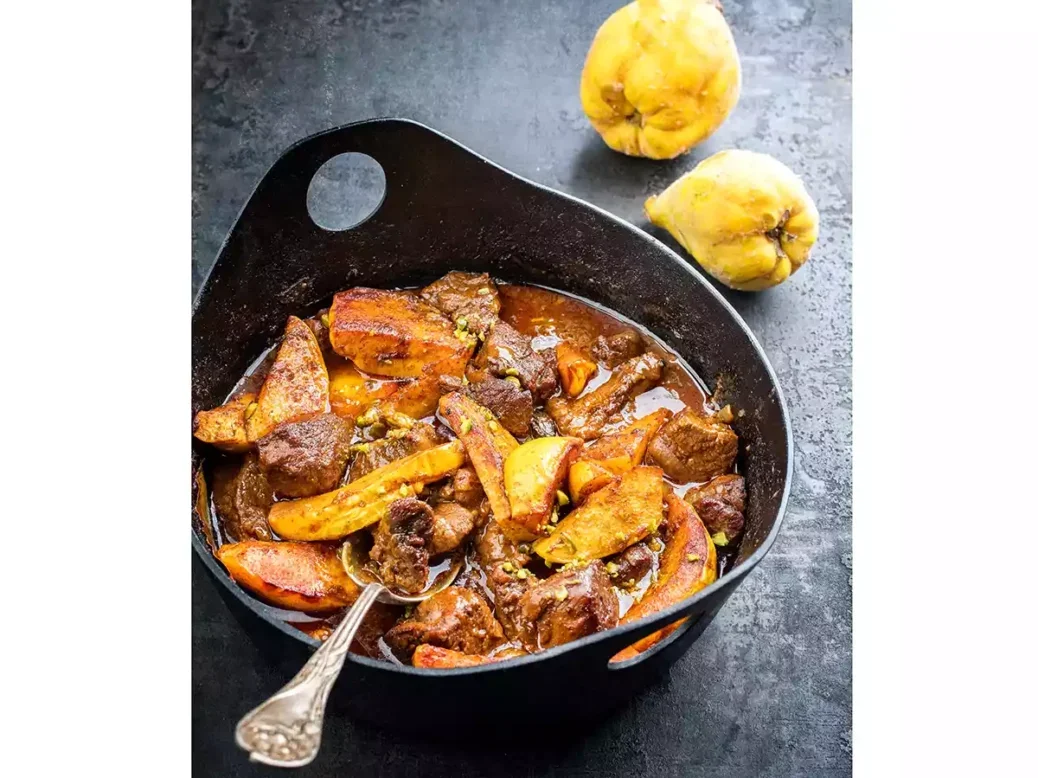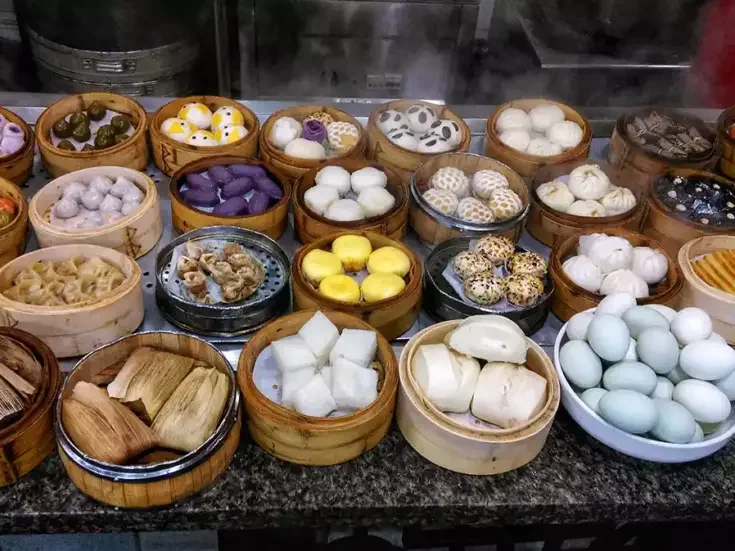
Lamb stews with quinces are familiar autumn dishes of Persian, Turkish, Azerbaijani, and Moroccan cuisines—and may well be Persian in origin—so it might seem to be stretching a point to call the Greek version, kydonato, or kidonato, a classic wine-country dish; all the more so, perhaps, because kydonato can’t be pinned to one particular region in Greece.
When it is given a specific home, it’s usually one of the many islands, although not Crete, as one might have expected from the name. Kydoni, the Greek for quince, whence kydonato, is derived from the ancient Cretan city of Cydonia (present day Chania). Cydonia was famous in Ancient Greece for the abundance and quality of its quinces and gave the fruit its Latin name Cydonia oblonga.
Among the scattered islands credited with being the origin of kydonato are the Ionian island of Lefkada (or Lefkas), the Ionian Islands in general, Lesbos in the northeast Aegean Sea, and Kea in the Cyclades archipelago in the southern Aegean. None of these is a significant wine producer, but Lefkada, which has an eponymous PGI, is of interest. Its vineyards are overwhelmingly planted with Vertzami, a very dark, thick-skinned, tannic grape variety that has been attracting some attention this century, not least from Antonopoulos, which blends it with a smaller proportion of Merlot from Achaia. The wines of Lesbos were much vaunted from ancient times through to the late Middle Ages, but sadly there is almost no commercial production today.
Kydonato, then, is a favorite dish of no fixed abode in Greece, based on a combination of meat and quince that is also enjoyed—at this time of year in particular—in other countries stretching from the eastern Mediterranean to Asia and North Africa. The flavorings of kydonato give the slow-cooked dish additional depth, sharpness, sweetness, and spice.
When it dates from is impossible to say. As Rena Salaman wrote in Greek Food (1983, revised and updated 1993): “There was hardly any need for [Greek cuisine] to be written down. Recipes were passed down […] commonly from grandmother to granddaughter, in a practical way … over a hot stove. Cookery books were not known and hardly existed in Athens until the early 1960s, but even then they were hardly used.”
It seems safe to assume, nonetheless, that kydonato goes back a long way, in the same way that meat cooked with sour fruits does in other countries. Quince was one of the earliest of cultivated fruits, much appreciated by both ancient Greeks and Romans. It was the “golden apple” of Greek mythology famously sacred to Aphrodite, the goddess of love. According to The Oxford Companion to Food (OUP, 1999): “Its first mention in Greek writings dates from just after 600 BC.”
Just as kydonato is of no fixed date or home, it has no fixed meat. Lamb is very common, but veal is used in moschari kydonato, pork is the meat in hoirino kydonato, chicken is often used on Chios (kotopoulo me kythonia), and beef and quince stew is also routine, although it usually takes the name sofigado.
A recipe handed rather than written down for generations comes with many a tweak and personal touch, but in most kydonato recipes the key flavorings for the lamb and sautéd/caramelized quince pieces are pomegranate molasses (or sometimes grape molasses with additional lemon juice), cinnamon, allspice, bay leaves (and sometimes savory or thyme), honey or sugar (less if grape molasses are used), and red wine. Onion is also usually included and occasionally some tomato, either chopped, passata, or purée.
The best wines to pair with kydonato
Individual interpretations inevitably vary in their depth and intensity of flavor, but tartness and sweetness, together with the gentle warmth, sweetness and fragrance of the cinnamon and allspice, need to be taken into account when deciding on accompanying wine.
My not quite “when in Rome…” red choice is northern mainland Greece’s Xinomavro, especially Naoussa from producers such as Dalamára, Thymiopoulos (his Earth and Sky), or Kir-Yianni; or, alternatively, Xinomavro blended with Krassato and Stavroto in Rapsani, for example, Thymiopoulos’ Rapsani Terra Petra. The more ethereal Xinomavro red wines from the higher, cooler Amyndeo region are tempting, from Alpha Estate and Kir-Yianni, for instance, but they are more in danger of being overpowered by kydonato.
White wine is also possible when the kydonato is at the lighter end of the spectrum with more emphasis on the quince than on the red-wine and pomegranate-molasses intensity. My almost-in-Rome suggestion is Santorini Assyrtiko that has been fermented in oak, such as Sigalas Barrel Assyrtiko, or one that has been aged on lees with bâtonnage. And my all-embracing recommendation is skin-contact white wines.
Looking for reds beyond Greece, the Rhône swings into view, both north and south. The Syrahs of Saint-Joseph and Crozes-Hermitage work particularly well, having the right weight and luminosity of fruit (usually black), supple, silky tannins and peppery spice, or sometimes smoky or dusty spice. The tiny Syrah-based Côtes du Rhône Brézème, which is very much northern Rhône in spirit, works in the same way. I would recommend trying the wines of any of the handful of producers, among them Domaine de Bréseyme and Domaine Lombard.
A wine that works with kydonato in a similar way to Syrah is Mondeuse from the Savoie Cru of Jongieux, and another success is Barbera Asti, most notably the vibrant damson-cherry-berry fruit, silky tannins, and crunchy freshness of Marchese Alfieri Barbera d’Asti La Tota 2022.
The Grenache-based reds of the southern Rhône come into picture when the caramelized quince and spice of kydonato demand sweeter fruit and spice. The Côtes du Rhône Séguret wines of Domaine de Mourchon are personal favorites, while Cairanne is an appellation that throws up many reliably generous wines. And my last word goes to Lebanon’s inimitable Chateau Musar.







